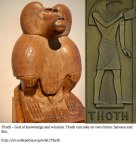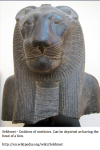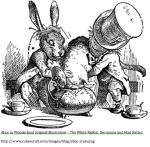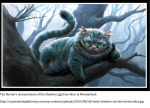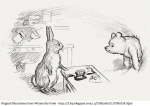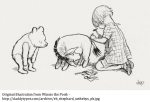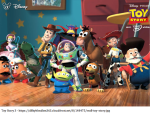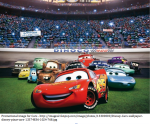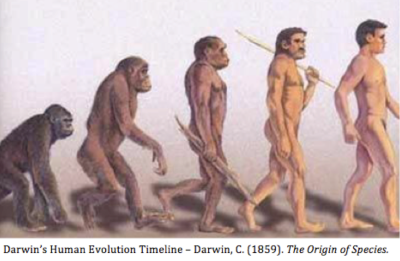Name: Laura Smith
Course: BA (Hons) Make-up for Media and performance
Unit Title: Extended Major Project
Reference: MSE603
Credit Points: 60
Weighting: 4.0
Hours of Study: 600
UNIT LEADER: Sara Taylor
Proposal:
The Extended Major Project theme is based around animal-human hybrids, and this project will be split into two parts: the first part of the project consisting of a bigger workload compared to the second part of the project (LO2). Both parts of the project will be presented through an online blog.
The aim of the first part of the project is to produce four make-ups of animal-human hybrids, which involve collaborative work with a photographer from the shoulders up, to create a collection. The make-up will consist of a combination of prosthetic appliances and headpieces as found appropriate, and the four designs will be based around different animal species – bird, mammal, reptile and insect. The combination of prosthetics and headpieces will be challenging, as past projects have generally been prosthetic based only. Moreover, the look of the creatures are going to emphasise the representation of what people find attractive, through different colours and textures and therefore a lot of research will go into colours and paint jobs that are appealing to look at. (LO3)
The aim of the second part of the project will be to produce either a silicone maquette or bust of an animal-human hybrid that is more animal orientated than human. Rather than being quite pleasing to the eye, this creature is going to be based more around the horror genre, creating a contrast between the two parts of the project. (LO1, LO2, LO3)
Both parts of the project will enable a vast range of technical skills, such as sculpting, mould-making, casting, painting and constructing original headpieces. Problem solving will be a constant occurrence throughout the project, and this will be overcome through experimentation and research, prior to making the final pieces, and also during. (LO1, LO2)
In regards to ethical, social and cultural issues (LO4), the topic of animals can be linked to animal cruelty and experimentation, particularly with the second part of the project. Using four different species of animals will enable research into the origin of the species and how they are treated in different cultures. The evolution of animals and humans will also be explored, including research on theorists such as Richard Dawkins and Charles Darwin, as well as the idea of Anthropomorphism – the attribution of human characteristics to other animals.
At the end of the project, a 2500 word evaluation will be written based around the overall outcome of the project – what did and didn’t work and why, what could have been changed, and how the project could be extended even further, and how the project has a whole has aided my on-going development as a professional special effects make-up artist. (LO1, LO2)
Aims:
A1 To provide you with the opportunities to exercise and enhance your knowledge and abilities in the development of a body of creative and technically competent work appropriate to your course aims and criteria at Level 6.
A2 To provide opportunities for you to learn from the increased complexity and rigour of creative production required for this unit.
A3 To encourage you to apply the advanced level of discipline and time-management which are required during the unit.
A4 To encourage you to work independently, albeit with supervision, in the development of your work, in a way which reflects contemporary professional practice. You are also encouraged to work effectively as a team member where this is demanded by your project or subject specialism.
Learning Outcomes (On completion of this unit you will be able to):
LO1 Demonstrate the ability to rigorously apply specialist knowledge, understanding and creativity in the production of your extended major project.
LO2 Demonstrate the ability to manage the complexity of practice demanded by the extended major project by managing your time and work efficiently.
LO3 Demonstrate ability in the coherent use of various representation techniques, documentation and presentations to specialist and non-specialist audiences.
LO4 Demonstrate your awareness of the ethical, social and cultural issues appropriate to the concept of a responsible professional practitioner, whether working independently or as part of a team
TRANSFERABLE SKILLS:
– Managing Self through organising a project that has been split into two parts.
– Teamwork through collaborating with a photography student.
– IT skills through creating a blog to log the progress of the project.
– Technical prosthetic skills such as sculpting, mould-making and casting.
Assessment Requirements:
– Log of progress of project, which will be presented in an online blog.
– A photographic collection consisting of four animal-human hybrid make-ups produced using a combination of prosthetics and headpieces.
– A silicone maquette or bust that has been painted and hair punched (if appropriate).
– 2500 word evaluation.
100%
Each assessment requirement must be passed at a minimum grade of 40% to successfully complete the unit.
Assessment Criteria:
Assessment Criteria (specific criteria related to the learning outcomes and linked to the statement of generic assessment criteria matrix):
Evidence of realisation through the application of technical knowledge and skills – Specialist knowledge and understanding are evident and applied in the work. (LO1)
Evidence of understanding through critical evaluation and reflection – Informing the development and management of the project. (LO2)
Evidence of realisation through presentation – The communication and presentation of ideas reflects best contemporary practice. (LO3)
Evidence of knowledge of concepts, contexts, criticism and theory – The work demonstrates awareness of concepts relevant to the responsible professional practitioner. (LO4)
Reference Material
– Cottrell, S. (2008). The Study Skills Handbook. Palgrave Macmillan.
– Nielsen, C. (2001). Animal Evolution: Interrelationships of the Living Phyla. OUP Oxford.
– Dawkins, R. (1994). The Cambridge Encyclopaedia of Human Evolution. Cambridge University Press.
– Darwin, C. (2006). The Origin of Species: 150th Anniversary Edition. Signet Classics; Rep Anv Edition.
– Debreceni, T. (2009) Special Effects Make-Up for Stage and Screen: Making and Applying Prosthetics. Focal Press.
STUDENT……………………………………….DATE………………..
TUTOR…………………………………………..DATE……………….






